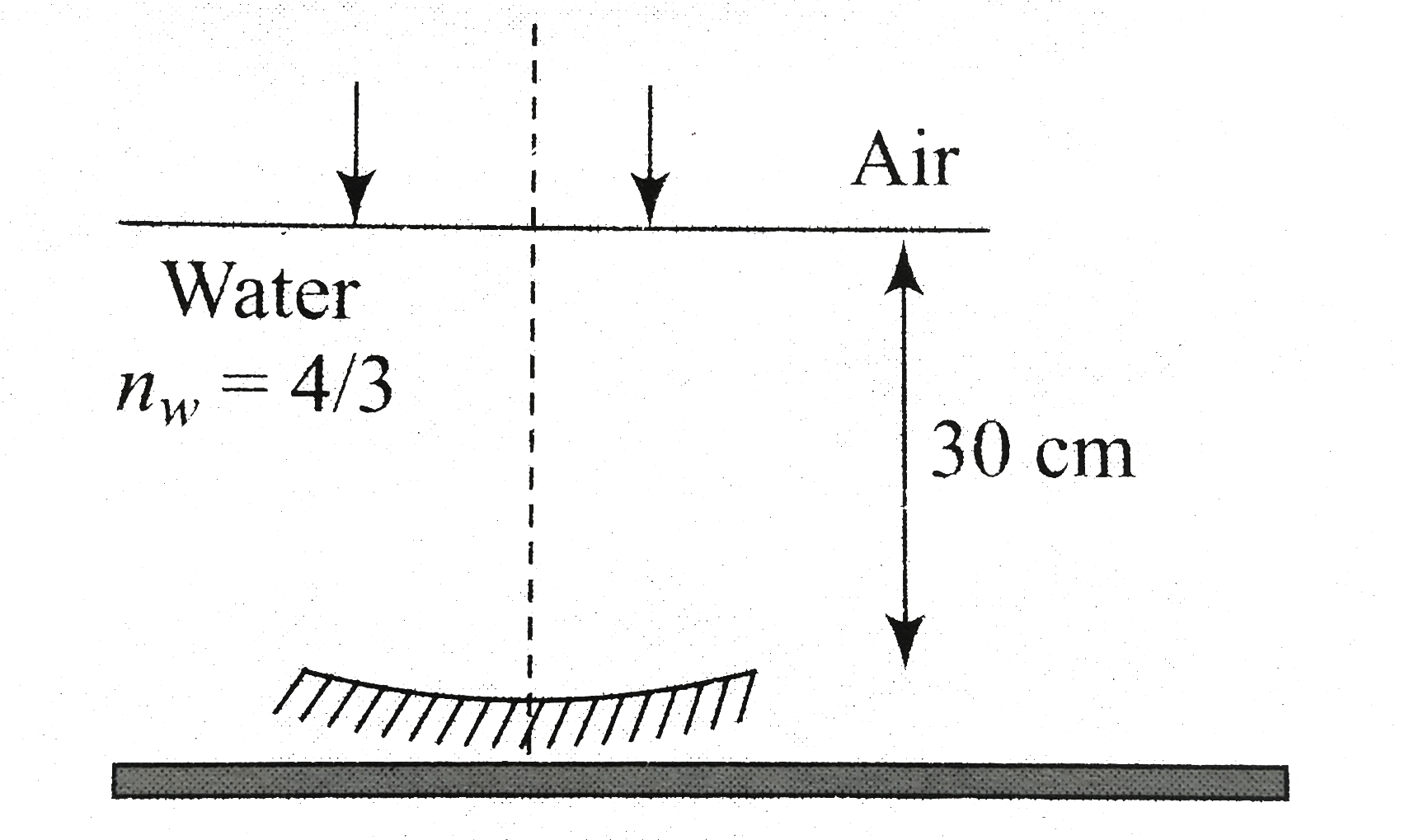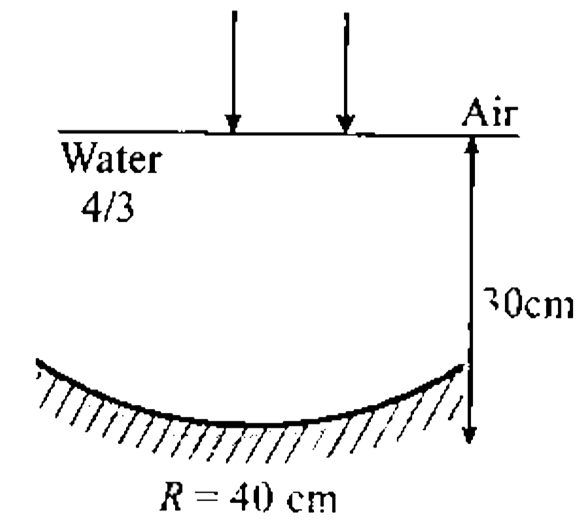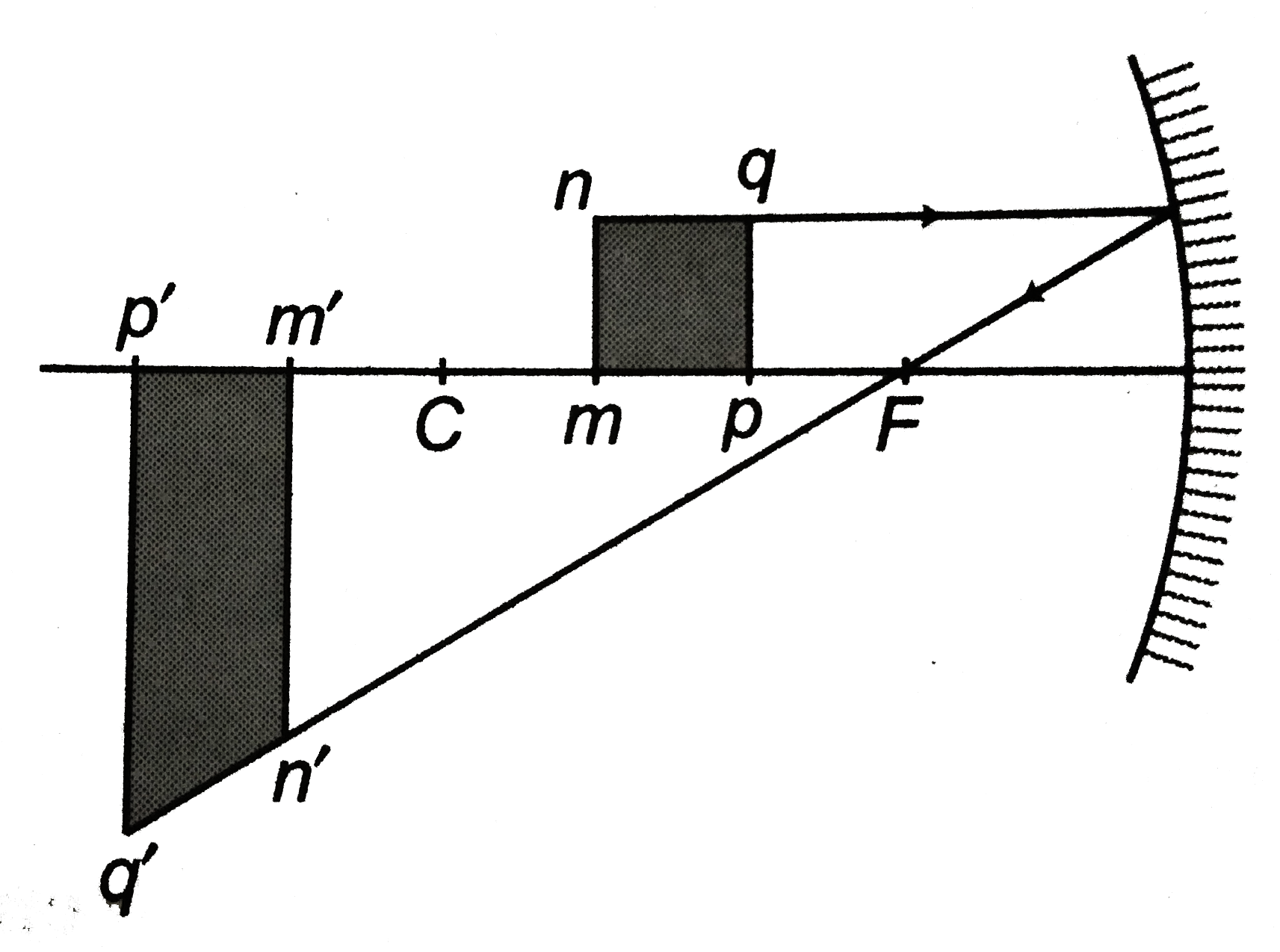A concave mirror of focal length 20cm is placed inside water with its shining surface upwards and principal axis vertical as shown in Fig. Rays are incident parallel to the principal, axis of concave mirror. Find the position of final image.

The incident rays will pass undeviated throught the water surface and strike the mirror parallel to its principal axis. Therefore, for the mirror, object is at ∞. Its image A(in figure Fig.) will be formed at focus which is 20 cm from the mirror. Now, for the interface between water and air. For observer at air, the image formed by mirror will act as an object for observer with real depth d=30−20=10cm.
Apparent depth observed by observer,
d′=d(nwna)=10(4/31)=7.5cm

Topper's Solved these Questions
- BOOK - CENGAGE PHYSICSCHAPTER - GEOMETRICAL OPTICSEXERCISE - Solved Examples15videos
GEOMETRICAL OPTICS
- BOOK - CENGAGE PHYSICSCHAPTER - GEOMETRICAL OPTICSEXERCISE - Exercise1.114videos
GEOMETRICAL OPTICS
- BOOK - CENGAGE PHYSICSCHAPTER - FRICTIONEXERCISE - QUESTION BANK1videos
FRICTION
- BOOK - CENGAGE PHYSICSCHAPTER - GRAVITATIONEXERCISE - Question Bank39videos
GRAVITATION
Similar Questions
A concave mirror of focal length 20cm is placed inside water with its shining surface upwards and principal axis vertical as shown in Fig. Rays are incident parallel to the principal, axis of concave mirror. Find the position of final image.
 View Solution
View SolutionA concave mirror is placed inside water its shining surface upwards and principal axis vertical as shown in figure. Rays are incient parallel to the principal axis of the concave mirror. Find the position of the final image.
 View Solution
View Solution
Knowledge Check
- Question 1 - Select One
An object is placed on principal axis of concave mirror at distance of 1.5 f Image will be at
A-3fB1.5fC-1.5fD3f - Question 2 - Select One
A ray parallel to the principal axis after reflection from a concave mirror will pass through
Aprincipal focusBprincipal axisCradius of curvatureDcentre of curvature - Question 3 - Select One
When a ray of light travelling parallel to the principal axis of a concave mirror strikes at the polished surface of mirror, the reflected ray
Ais sent back along the same directionBpasses through the principal focus of mirrorCpasses through the centre of curvature of mirrorDpasses through the pole of mirror
A convex lens of focal length 20cm and a convex mirror of focal length 10cm are placed co-axially 50cm apart from each other. An incident beam parallel to its principal axis is incideent on the convex lens. Locate the position of final image formed due to the combination.
View SolutionA ray of light parallel to principal axis after reflection from concave mirror passes through……….. .
View SolutionA convex lens, of focal length 25 cm, and a concave mirror, of radius of curvature 20 cm. are placed co-axially 4 cm aprat from each other. An incident beam, parallel to the principal axis, is incident on the convex lens. Find the position and nature of the image formed by this combination.
View SolutionA particle goes in a circle of radius 2.0 cm. A concave mirror of focal length 20 cm is placed with its principal axis passing through the centre of the circle and perpendicular to its plane. The distance between the pole of the mirror and the centre of the circle is 30 cm. Calculate the radius of the circle formed by the image.
View SolutionA square mnap is kept between F and C on the principal axis of a concave mirror as shown in figure . Find a rough image of this object.
 View Solution
View Solution

